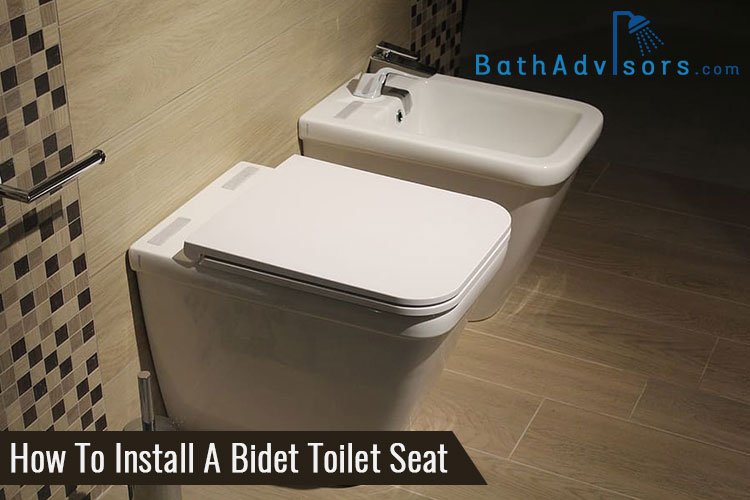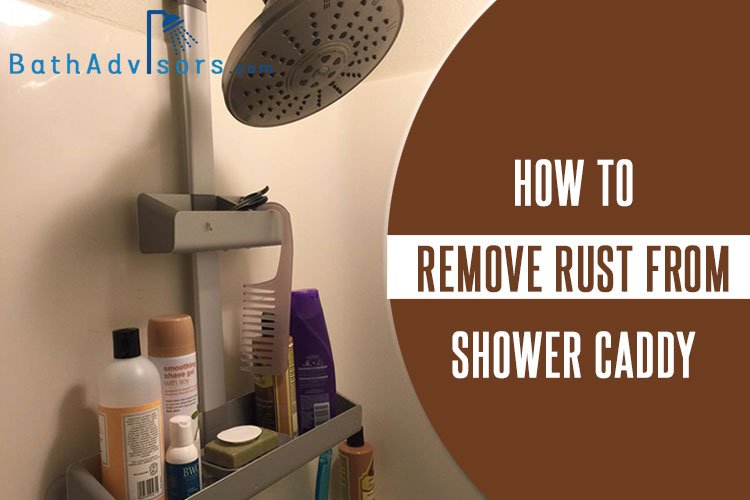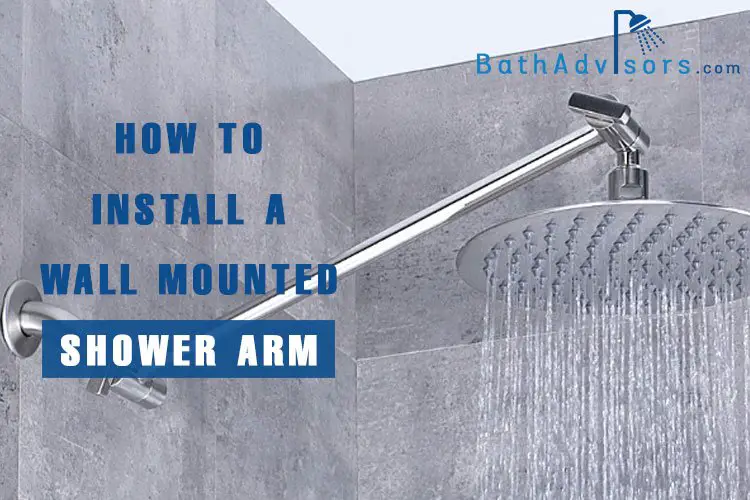Looking to upgrade your bathroom fixtures but feeling stuck with an outdated Roman tub faucet because there is no access panel in sight?
Replacing a Roman tub faucet without an access panel can seem like a daunting task, but it’s definitely doable using the right tools and techniques.
In this guide, I’ve shared the exact steps you need to follow to replace the faucet without causing any damage. You’ll also get additional information about common problems and mistakes to avoid while removing a tub faucet without a Roman tub access panel.

What Are The Different Parts Of Roman Tub Faucets?
The different parts of a Roman tub faucet are:
- Spout- It’s that part of the faucet that the water flows through. It usually has a curved design.
- Handles- Generally, a Roman tub faucet has two handles: one for hot water and another for cold water.
- Valve- The valve controls the flow of water from the faucet. It’s located inside the faucet’s body.
- Mounting Hardware- These are screws and bolts that secure the faucet to the tub deck.
- Escutcheon- This is a decorative element that covers the hole in the tub deck where the faucet is mounted, and it’s usually made of metal.
- Handheld Showerhead- Some Roman faucets also come with a handheld showerhead which is connected to the spout with a flexible hose.
Why A Roman Tub Faucet Replacement Might Be Necessary?
There are several causes why a Roman tub faucet replacement might be necessary, which include:
- Corrosion: Corrosion in the metal parts of the Roman tub faucet is a common cause of replacement. Corrosion happens due to exposure to chemicals or hard water and causes deterioration and other problems like leakage.
- Leaks: Over time, the gaskets and seals inside the Roman tub faucet wear out, causing leaks, and a replacement becomes necessary.
- Malfunctioning Valve: Similar to gaskets and seals, the valve can also get damaged or malfunction, not allowing the faucet to work properly. A valve repair or replacement is the solution in such cases.
- Outdated Style/ Upgrades: If you’ve revamped your bathroom and the outdated design of your Roman faucet no longer complements the interiors, you may consider replacing it.
Common Problems Faced While Replacing A Roman Tub Faucet Without An Access Panel
Replacing the Roman tub faucet with no access panel can be hazardous due to several causes, and some of them are-
- Limited space or access: A Roman tub faucet does not have a traditional access panel like other faucets, and you’ll work on a tight space between the wall and the faucet. It creates issues maneuvering over different tools.
- Tightened bolts & nuts: Removing the Roman tub faucet isn’t an everyday affair. And over time, the bolts and nuts get corroded, making them really difficult to remove.
- Cutting an access hole: Things can get messy if you need to cut an access hole in the wall or behind the tub. It’s difficult to accomplish the job without damaging the surrounding materials.
- Hidden Plumbing: The hidden plumbing of the Roman tub faucet makes it difficult to identify and fix the problem, especially when you’re not an expert in the job.
- Mismatched Parts: If the new faucet isn’t exactly similar to the new one, you’ll have to buy additional extensions to make them fit right, which adds to the expense.
Tools Required To Replace A Roman Tub Faucet
- Hex key or Allen wrench
- Philips head or flathead screwdrivers
- Plumber’s putty or silicone caulk
- Putty knife
- Pliers
- Cloth or rag
- Trim kit
How Do You Replace A Roman Tub Faucet Without An Access Panel? Detailed Guide
Go through the steps, and follow them in the order they’re explained to replace your Roman bathtub faucet with no access panel.
Step 1: Turn Off the Water Supply
The first step in replacing a Roman tub faucet is to turn off the water supply. Since there is no access panel, chances are high that you will find the shut-off valves in the adjacent room. Open the closet and rotate the valves to turn off the water supply.
If you don’t see shut-off valves anywhere, you’ll need to turn off the main water supply to your bathroom. Drain the remaining water in the faucet, before going ahead with the next steps.
Step 2: Remove the Handles and Trim
Next, use a screwdriver or pliers to remove the handles and trim from the faucet. Some trims may be secured with screws, while others simply snap into place.
If there is caulking or silicone around the trim, use a utility knife to carefully cut it away. Be gentle when removing the handles and trim to ensure you don’t damage the tub’s rim.
Step 3: Remove the Tub Spout
Remove the tub spout using a spout nipple extractor. The handy tool is designed to grip the inside of the tub spout and allow you to unscrew it easily.
If the tub spout is still difficult to remove, hover a hair dryer over the spout’s surrounds to loosen any adhesive that may be holding it in place.
Step 4: Remove the Faucet Body
If the faucet is years old, its body may be tightly secured to the tub, so I recommend using an adjustable wrench to loosen and remove the nuts. If the nuts are jammed in place, spray some WD-40 or penetrating oil, and then go ahead with removing them.
Step 5: Inspect the O-rings or Gaskets
With the faucet body removed, inspect the old O-rings or gaskets to see if they need to be replaced. O-rings or gaskets can wear out over time and can cause leaks. If they are damaged or worn, throw them away, and consider installing new O-rings with the faucet.
Step 6: Install the New Faucet’s Body
Apply a small amount of plumbers putty to the underside of the faucet base, and then position it in place on the tub. Make sure the faucet is level and aligned properly to the tub, and use an adjustable wrench to tighten the mounting nuts.
Step 7: Replace the O-rings or Gaskets
If the O-rings or gaskets were damaged, you must install new ones. Apply a small amount of silicone grease to the new O-rings and put them in place on the faucet body. Make sure these rubber rings to seat properly creating a watertight seal.
Step 8: Attach the Trim and Handles
With the faucet securely in place, you can now attach the trim and handles. If the faucet has a screw assembly you’ll need to attach the trim and handles using screws.
Snap them on the faucet, if you have a screw-less faucet. Apply a small amount of silicone sealant around the edges of the trim to seal it properly.
Step 9: Attach the Tub Spout, and Test It Out
Finally, thread the tub spout onto the nipple and hand tighten. You can use pliers to secure it in place.
Once you’ve completed the installation, turn the water supply back on and test the new faucet to ensure it is functioning properly. Check for leaks and make any necessary adjustments if required.
Mistakes To Avoid While Replacing A Roman Tub Faucet With No Wall Access
To ensure your Roman tub faucet is fixed properly, you should avoid the following mistakes:
- Not using the appropriate tools: Wrong tools can damage the tub deck or the faucet.
- Improper alignment of the faucet: An improper faucet alignment can cause leaks or damage to the tub deck.
- Over-tightening the connections: While you need to tighten and secure all connections, overtightening them can cause leaks or faucet damage.
- Not checking for leaks: Many people ignore checking for leaks once a replacement is done. Ignoring them can cause serious issues in the future, so never forget to check for even a slight seepage.
FAQs
Q: Are All Roman Tub Faucets Interchangeable?
No, all Roman tub faucets are not interchangeable. They come in varied sizes and styles, and the specifications of these faucets vary between manufacturers.
Q: How Much Does It Cost To Replace Roman Tub Faucet?
According to Home Advisor, the cost of replacing a Roman tub faucet can range between $350 to $450. However, it may cost more, if you hire a professional for the job.
Q: Can You Use A Sink Faucet For A Roman Tub?
No, you can’t use a sink faucet for a Roman tub because they are not similar. Water flow rates, installation types, and other features are different for both faucets; hence they are not interchangeable.
Q: Is A Roman Tub Faucet The Same As A Garden Tub Faucet?
Roman and garden tub faucets may look similar, but they are designed for different types of tubs. A Roman tub faucet is typically bigger and is mounted on the rim of a large freestanding bathtub.
On the other hand, a garden tub faucet is smaller and is ideal for garden tubs that are larger and deeper than a standard bathtub, but smaller than a Roman tub.
Conclusion
Now that you know you don’t have to be a plumber to replace a roman tub faucet without an access panel, you can easily do it the next time you renovate your bathroom.
Go easy with the faucet, as it’s attached to the tub, and being too harsh can damage the rim. Keep penetrating oil like WD-40 handy throughout the process to loosen and tighten the nuts with ease, and make sure to clean off the oil stains right away for a squeaky clean installation.






